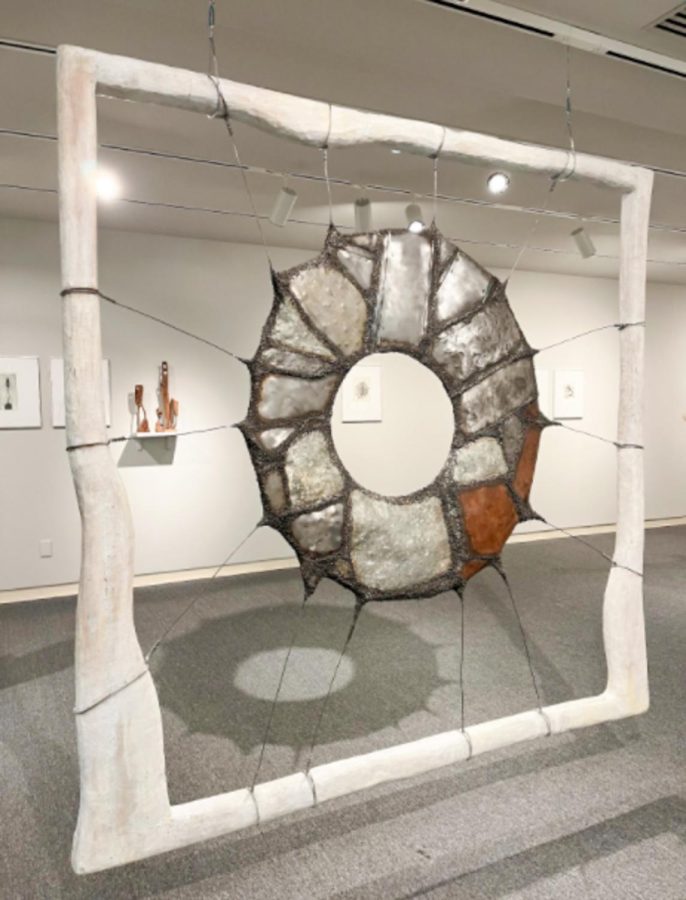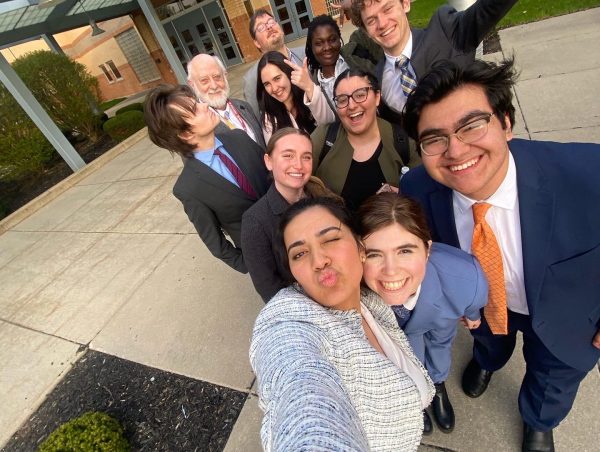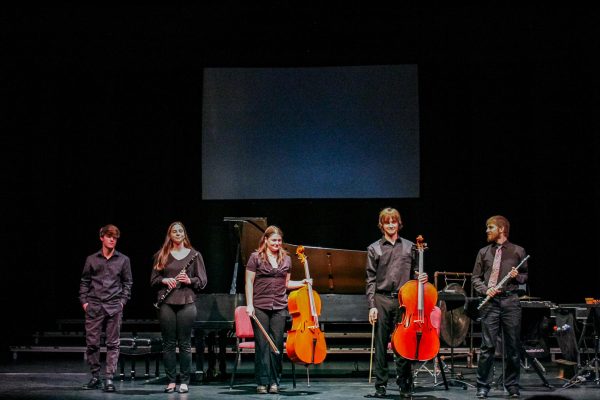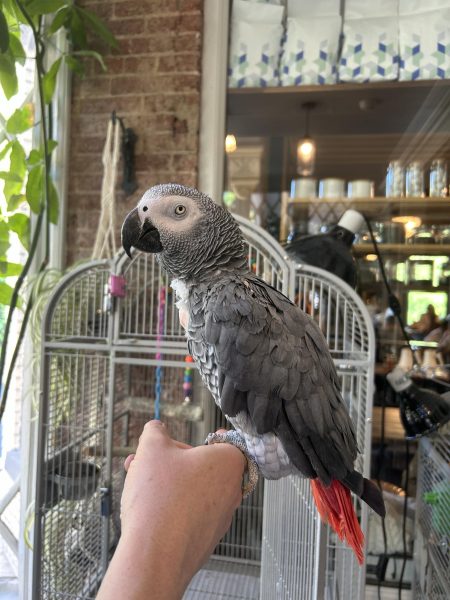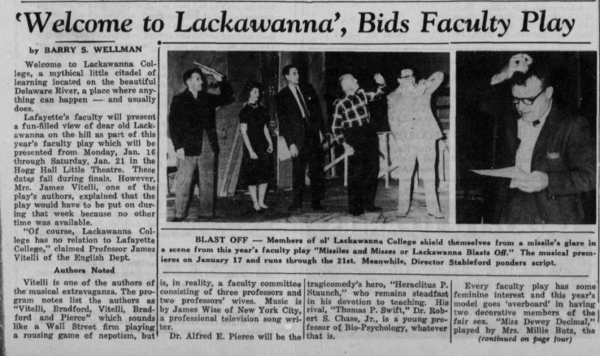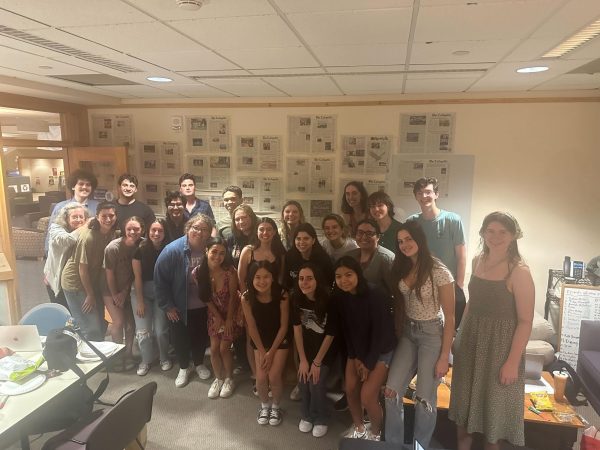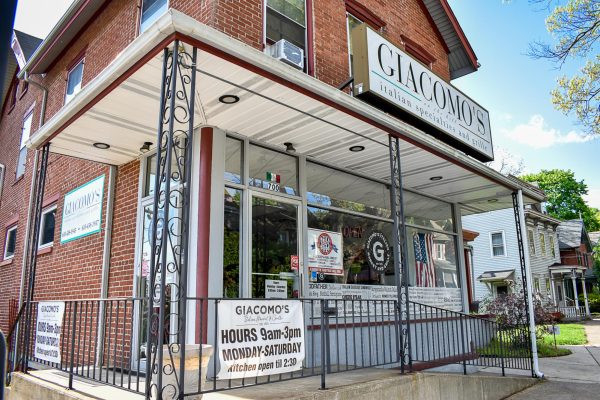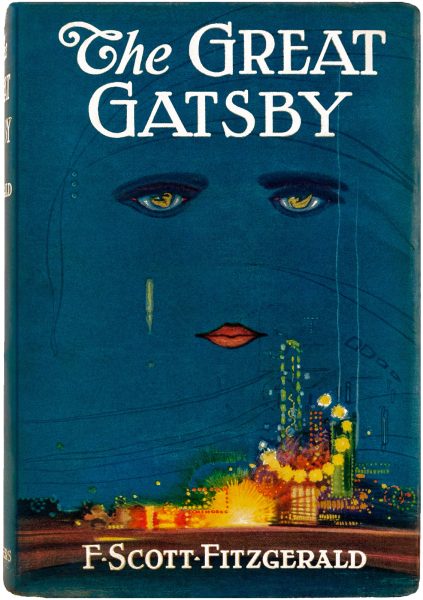‘The art will just speak to you’: Khalil Allaik exhibit showcases the power of form in art
The ‘Khalil Allaik: Manifesting Form’ exhibit will be showcased in the Williams Center until Feb. 9. (Photo courtesy of Xavier Walker ’22)
February 4, 2022
The lobby and area outside of the Williams Center of the Arts are currently adorned with art pieces ranging from large abstract sculptures to small drawings. Although the meaning of the pieces is not obvious at first glance, they reveal a strong artistic commitment to form and process.
From Jan. 6 to Feb. 9, the gallery is showcasing the exhibit “Khalil Allaik: Manifesting Form.” The exhibit by multidisciplinary artist Khalil Allaik showcases a contemplation of formal ideas in various mediums such as drawings, sculptures and carved objects. His work combines experimentation with conceptual form and the rigors of academic investigation.
Allaik, who holds a fine arts degree from Lebanese University in Beirut and has lived and worked in the Lehigh Valley for almost two decades, has been classically trained in painting, drawing and interior design. His work draws upon futuristic and hybrid forms that combine aspects of the organic, the human and the abstract. He gathers inspiration from his personal experiences and from interpretations of cosmic relationships, such as the relationship between the earth and the universe, or the past and the future.
Director of galleries and curator of collections Ricardo Reyes described Allaik as a “very prolific artist” and a “skillful technician who can think broadly and manifest those ideas into material.”
In coordinating this particular exhibit, Reyes wanted to focus on Allaik’s process. Through studio visits and trips to a number of Allaik’s group shows, Reyes was able to get to know Allaik as an artist individually and within his community, as well as the context within which Allaik’s work was shown and how he wanted it to be shown.
“I really wanted to present his work not just as pretty sculptures, but present him as an artist who not only struggles but enjoys the forms that come into his head,” Reyes said.
Allaik’s artistic process is very meticulous. After identifying an idea, he spends time working through the concept across various forms such as clay, wood, etching, paper, steel and more. Through these sometimes difficult mediums, Allaik is an artist who pushes back against immediate gratification
“Carving wood does not take ten seconds,” Reyes said. “There’s still a genuine desire to work with material and see what comes.”
Pedro Barbeito, assistant professor of art and director of the Experimental Printmaking Institute, first encountered Allaik’s work at an exhibit in the Allentown Art Museum. What Barbeito appreciates the most about Allaik’s work is its beauty and the engagement it provokes in viewers.
“I see an engagement with sculptural form that references a history of Lebanese art: Roman, Ottoman and Christian art references, as well as the debris and wreckage of war that surrounded him as a child in Beirut,” Barbeito said. “All of this is captured through the forms he uses and his choice of materials: stone, iron and wood, the materials that reveal themselves in the rubble of war and that have also been used historically in art to create the most beautiful of forms.”
Reyes remarked that even those not immersed in the art world can get a lot from Allaik’s exhibit.
“This work has a lot of ways to be appreciated even if you are not a regular art viewer. You can appreciate the form of the creations,” Reyes said. “There’s an immediate reaction that anybody can come in with an open mind and an open heart. The art will just speak to you.”
More information about Allaik’s work, including a recording of an artist talk that took place on Feb. 3, can be found on the Lafayette College Art Galleries website at galleries.lafayette.edu.



































































































